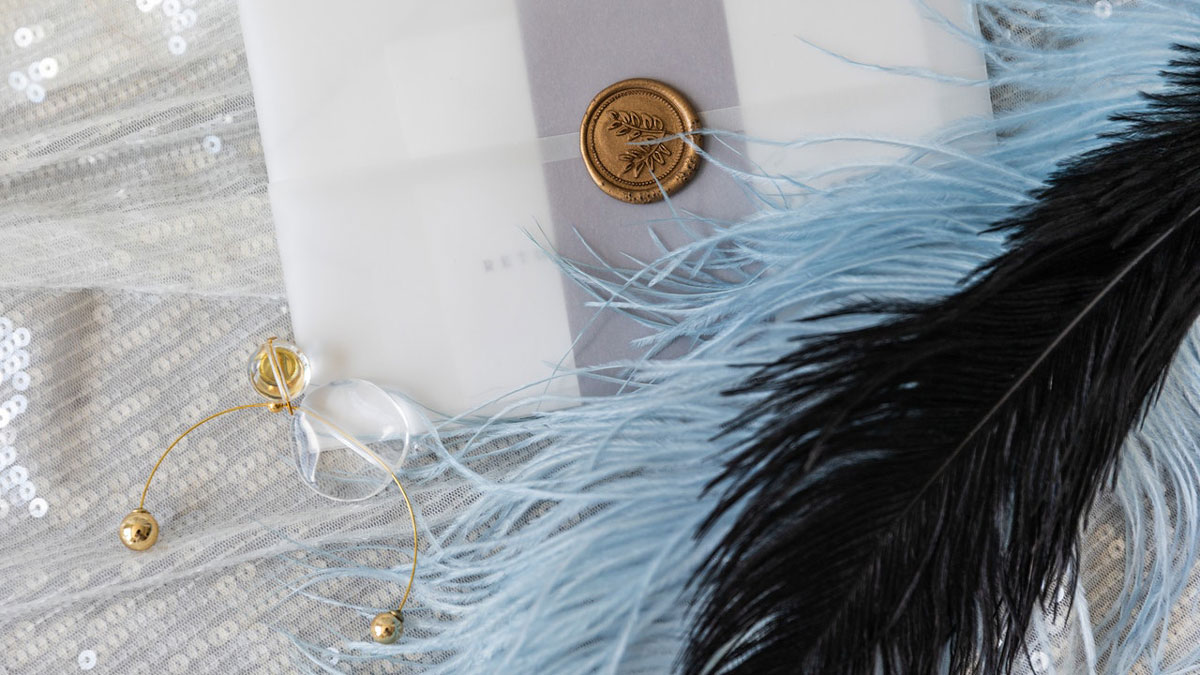Figuring out whom and how to invite to your wedding is exciting and challenging simultaneously.
Your guests are a vital element of your wedding celebration, the people with whom you want to share the best day of your life.
However, you can’t invite everyone you know. Narrowing down the guest list is complicated, and so is designing, wording, addressing, and mailing invites.
Additionally, you should take care of save-the-dates, RSVPs and send out the invites at the right time.
Wedding invitation etiquette isn’t set in stone, but you should know the essential rules to avoid appearing impolite.
Table of Contents [show]
Who to Invite
Before researching wedding invitation design ideas and addressing etiquette, you should create a guest list. There’s no universal rule regarding who to invite to your wedding, but specific guest categories are typically in priority.
Inviting your immediate family members and best friends is obvious; this should go without saying. However, the budget and venue space is usually limited, and couples have to split other guests into lists by importance.
Assigning someone to a C-list may seem cruel, but that’s the only practical way to decide who to invite.
You may have to adjust the guest list a couple of times throughout the planning timeline, and the changes usually happen with non-priority guests.
As a rule of thumb, you should invite everyone you want and not feel forced to invite anyone you’d rather not see on your big day.
The A-list guests are anyone who comes to mind first. If you had to get married tomorrow morning, you’d likely invite your siblings, parents, grandparents, and closest friends.
B-list guests are those who you’d want to see at your wedding, but your day wouldn’t be ruined if they couldn’t come. Think cousins, aunts, uncles, and a broader circle of friends.
C-list guests are those you’d love to invite but are ready to sacrifice if the budget is tight or the venue can’t accommodate everyone. These may also be people you feel obliged to invite but don’t genuinely care about their attendance.
C-list guests may be extended family members you don’t talk to often, travel buddies, old school friends, or work pals.
Some couples also have D-list guests. These are people you may not want to see but feel forced to invite, like your parents’ friends, neighbors, people who invited you to their wedding, or guest children.
Regardless of how wide your acquaintance circle is, draw a line on the guest count. You may invite 20 or 220 people, but the decision should be solely yours and your partner’s.
Save-the-Dates
Save-the-dates aren’t mandatory but highly practical. Firstly, it’s an elegant way to announce your wedding to people who’ve missed your engagement.
Secondly, they allow your guests to plan while giving you the flexibility of venue and time choice.
Unlike official wedding invites, save-the-dates don’t have to mention any details. All you should indicate on save-the-dates is the date, town or state, and occasion. Optionally, you may also add a link to your wedding website.
The general rule is to send save-the-dates about six months before the wedding, but you may move the timeline if you plan a destination wedding or your guests live abroad.
You should only send save-the-dates to people invited to the wedding. Once they’re sent, there’s no turning back – you can’t uninvite someone from your wedding. Therefore, create an accurate guest list before sending save-the-dates.
Nowadays, sending save-the-dates by email isn’t considered impolite. However, ensure that they don’t get into the spam folder and that your guest email addresses aren’t outdated.
When to Send the Invitations
The best time to send wedding invitations is six to 12 weeks before the big day. However, you may send the invitations 16-20 weeks in advance if you plan a destination wedding or if your guests live abroad.
Avoid sending official invitations too early. The problem with sending invitations six months before the wedding or earlier is that you lose flexibility.
Wedding plans can change, and you don’t want to call each guest individually with updates and apologies.
However, don’t send the invites a month before the event because your guests need to make plans, take days off work, and budget for gifts and travel.
How to Design the Invitations
Your wedding invitation design is a vital element of your event aesthetics. It should express your and your partner’s personalities and give guests a hint on the wedding theme and formality level.
You can hire a professional designer to create custom wedding invites or make them yourself. Each option has its pros and cons, so you should consider the timeline and budget.
Trusting your invitation design to a professional is a foolproof option if you can afford it. An experienced designer will ensure that your invites align with your wedding style, are readable, and will handle technical points such as printing.
On the other hand, you can find hundreds of free wedding invitation templates online and save plenty of money. Download the preferred template, edit the information, and print the invites – it’s that simple.
The paper quality and printing technique play a vital role in your invitation look.
Always use heavy card paper, at least 13 points thick, rather than cheap office printing paper. Consider paper with metallic, fabric-like, or different textures.
Flat printing is the cheapest wedding invitation printing technique and the only method available with home printers.
If you are ready to pay for professional printing, consider engraving, thermography, white ink printing, and foil stamping for wow-effect.
Most importantly, ensure that all information on your invites is readable and understandable. Great design isn’t simply about the looks – it’s about clarity and comprehension.
How to Word the Invitations
Wording wedding invitations is never easy. You may struggle to find words, define what information to include, or simply feel cringe as you write down the options.
Traditionally, wedding invites include who’s hosting the event, a request to attend the wedding, the couple’s names, the date and time, venue, and basic reception information.
Sometimes, the reception information is mentioned on separate reception cards.
The variety of wedding invitation wording options is endless. The trick is to match the tone with your wedding style and invitation design.
For example, if your wedding is a collaborative affair between you and your parents, you may begin with “Together with their parents, Sarah and Jake kindly request you to join them at the celebration…”.
There’s no need to mention the hosts if the couple hosts the wedding themselves. Otherwise, the wording may seem odd – “Sarah and Jake request the pleasure of your company at Sarah and Jake’s wedding…”.
Depending on the event formality, you may write your and your partner’s full names with titles and last names or only the names. The bride’s name usually goes first, or the names go in alphabetical order.
The wedding invitation etiquette presumes that the date and time are written in full, but a numerical format is acceptable for casual invites. The exact venue address is only required if omitting it may cause confusion.
The reception information may include anything you consider important, such as a request not to bring kids (worded in a polite way), dress code, or reception location if it’s different from the ceremony location.
RSVP Response Cards
Traditional wedding invitations come with separate RSVP response cards for guests to fill out and return by mail. RSVP serves as an attendance confirmation and helps the couple in planning.
Typically, RSVPs have deadlines ranging from a couple of months to a couple of weeks before the big day. You may word the RSVP as “the favor of a reply is requested by (date)” or something along the lines.
Add “will attend” and “unable to attend” lines to get a clear understanding of how many people will attend your wedding.
Usually, the RSVP card requests the guests to fill out the full names of everyone attending, pick the preferred meals, and disclose food allergies or dietary restrictions. Meal choices are unnecessary for buffet or family-style receptions.
Proper wedding RSVP etiquette states that the couple should pay for postage. Thus, include a stamped envelope with a return address in every invitation.
How to Address & Mail Invitations
How to address wedding invitations largely depends on your event style and whom you’re inviting. The basic rule is simple – use full names with titles and last names on the invitation’s outer envelope, but only those of adult guests.
The information on the outer envelope is necessary for the mailperson, so be formal and concise. Write the guests’ full address in the envelope’s center and your address in the upper left corner.
The inner invitation envelope should list the names of everyone you welcome at the wedding. For example, write the names of the parents and all children if you want to see an entire family.
Alternatively, list only the parents’ names if the wedding is for adults only. Mentioning that children aren’t welcome is unnecessary – the lack of their names on the inner envelope implies it.
If some of your guests have distinguished professional titles, address them by that title and list their names first. You can be less formal on the inner envelope than on the outer envelope.
If you want to refrain from the inner envelope, list the guest names on the invitation card. Have your invitations weighed at the post office before stamping them to ensure that you pick the right postage.
Request hand-canceling to avoid machine damage, and mail your invites first-class to facilitate tracking.













No Comments Add one
Leave a Comment